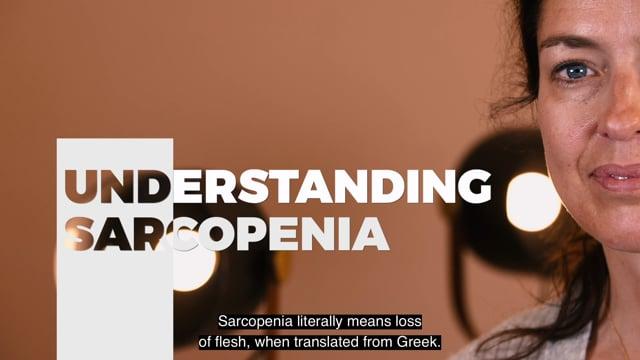Understanding the risk of falling with Md PhD Sandra De Breucker
08 Dec 2022
In this episode of Mintt Academy, Sandra De Breucker, Head of Geriatrics of the Erasmus Hospital tells you more about how to better understand the risk of falling.
08 Dec 2022
In this episode of Mintt Academy, Sandra De Breucker, Head of Geriatrics of the Erasmus Hospital tells you more about how to better understand the risk of falling.
A person at risk of falling is someone who has already fallen in the last six months. So if you have people around you who have suffered a fall, just one fall: it can be accidental, we can all trip over a paving stone that is sticking out in the street... That's not a worrying situation. But if this person starts to fall several times, both outdoors and indoors, then we should be aware that this patient is most probably at risk of falling and could suffer the serious consequence like a fracture.
To be able to identify people at high risk of falling, we must first distinguish between intrinsic risk factors. This can include risks linked to the individuals themselves, and extrinsic risk factors, i.e. linked to their environment. Among the intrinsic factors, we find all the conditions that can lead to muscular weakness. For example: medications that can cause falls in blood pressure, medications that make the heart too slow and induce bradycardia, psychotropic medications such as sleeping pills, tranquilizers, anti-depressants that slow down thinking and walking and that affect the risk of falling.
The second is the environment. When they are in a cramped environment, cluttered with all the objects and furniture of a lifetime, the elderly can sometimes be in a place where there is an increased risk of falling. It could be because of carpets that are not firmly attached to the floor, poor lighting in the corridors...
If someone close to you has experienced a fall, you should first contact your GP and report the fall. This is not something that is normal. You don't fall with age, and a fall is an event that can lead to major complications. You should therefore talk to your GP. The GP, if alerted, can call on the geriatric day hospital. That is a structure that includes both geriatric doctors who are specialised in the treatment of falls, and in their prevention. But it also includes a multidisciplinary team composed of physiotherapists, occupational therapists, and psychologists if the falls have traumatic consequences on the person's psyche. All of this is required to be able to deal with the problem of falls in a multifactorial way. Because if we only treat one thing, like removing a sleeping pill for example, we run the risk of not achieving our objective.
Obviously, we need to be able to treat all the potential causes of falls so that the patient can regain their autonomy. As part of this assessment, the physician will look at the medications that may contribute to the risk of falling. He will also look at whether the patient suffers from what is called orthostatic hypotension, i.e. whether his blood pressure drops when he goes from lying down to standing. If this is the case, the patients' medications may need to be decreased. Other systems may also have to be put in place to allow venous return to the heart and ensure adequate blood pressure.
The physiotherapist will assess the risk of falling as well as the patient's balance and walking speed. Indeed, a slow patient is more at risk of falling than one who walks at a regular speed. He will see what techniques are necessary to overcome the walking difficulties. He will also make recommendations to the outpatient physiotherapist. He will then take over and set up a rehabilitation programme at home or in their practice.
The occupational therapist, who is also part of this multidisciplinary team, will be more interested in situations where there is a risk of falling. For instance, a patient who takes a glass from a wall cupboard by climbing onto a stool or a patient who does not light up the area around his bed in the room when he gets up during the night to go to the toilet. Environmental adjustments will allow the patient to regain their autonomy, to live in safety and above all not to live in fear of a future fall.

Looking for an easy way to install a reliable fall detection solution in your facility? Look no further than Mintt. We have streamlined the installation process to make it hassle-free and efficient.

Falls are a major public health problem, particularly among older people. According to the World Health Organisation (WHO), approximately 28-35% of people over 65 suffer at least one fall yearly.

In this episode of Mintt Academy, Sandra De Breucker, Head of Geriatrics of the Erasmus Hospital tells you more about how to better understand sarcopenia.
This website uses cookies
We use cookies to provide you with a better visitor experience. Our website tracks three levels of cookies, you can go to cookie settings to manage your preferences at any time. You can read more about what cookies are and which cookies we collect in our privacy policy.
Cookie settings
We use cookies to provide you with a better visitor experience. Our website tracks three levels of cookies. You can adjust your preferences at any time. You can read more about what cookies are and which cookies we collect in our privacy policy.
Adjust your preferences
Functional cookies are necessary cookies that ensure that the website functions properly and that your preferences (e.g. language, region) are stored properly.
The cookies we use are: essential cookies, craft cms and vimeo
Analytical cookies allow us to analyze the use of the website and to improve the visitor experience.
The cookies we use are: Google Analytics, LEADforensics and leadinfo
Marketing cookies aim to personalize your experience and send you relevant content and offers on this and other websites.
The cookies we use are: Linkedin Insights, Google ads